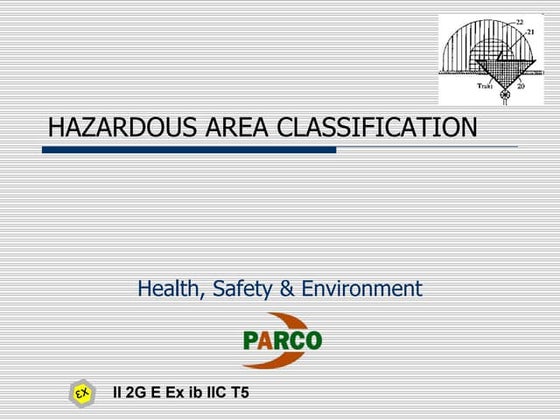What Does Roar Solutions Do?
What Does Roar Solutions Do?
Blog Article
Getting My Roar Solutions To Work
Table of ContentsThe Basic Principles Of Roar Solutions The Buzz on Roar SolutionsMore About Roar Solutions
In order to shield installments from a potential surge an approach of evaluating and categorizing a potentially unsafe location is required. The function of this is to guarantee the correct option and installation of tools to eventually prevent a surge and to guarantee safety and security of life.
(https://yoomark.com/content/join-roar-solutions-our-comprehensive-hltaid011-provide-cpr-first-aid-course-and-gain)
No devices ought to be set up where the surface area temperature of the devices is more than the ignition temperature level of the given hazard. Below are some typical dust harmful and their minimum ignition temperature level. Coal Dirt 380C 225C Polythene 420C (thaws) Methyl Cellulose 420C 320C Starch 460C 435C Flour 490C 340C Sugar 490C 460C Grain Dirt 510C 300C Phenolic Material 530C > 450C Aluminium 590C > 450C PVC 700C > 450C Residue 810C 570C The chance of the threat existing in a concentration high enough to trigger an ignition will certainly differ from location to place.
In order to identify this risk an installment is separated right into areas of danger depending upon the amount of time the hazardous exists. These areas are described as Areas. For gases and vapours and dirts and fibres there are three zones. Area 0 Area 20 A dangerous environment is highly likely to be existing and might exist for lengthy durations of time (> 1000 hours each year) or perhaps continually Zone 1 Zone 21 An unsafe ambience is possible however not likely to be existing for lengthy durations of time (> 10 450 C [842 F] A classification of T6 means the minimal ignition temperature is > 85 C [185 F] Dangerous area electric devices possibly created for use in higher ambient temperature levels. This would certainly indicated on the rating plate e.g. EExe II C T3 Ta + 60C( This means at 60C ambient T3 will not be gone beyond) T1 T1, T2, T3, T4, T5, T6 T2 T2, T3, T4, T5, T6 T3 T3, T4, T5, T6 T4 T4, T5, T6 T5 T5, T6 T6 T6 A T Course ranking of T1 implies the maximum surface temperature produced by the tool at 40 C is 450 C. Assuming the associated T Class and Temperature ranking for the tools are appropriate for the area, you can always use an instrument with a more rigid Department score than required for the area. There isn't a clear answer to this concern. It truly does depend on the kind of tools and what fixings need to be lugged out. Equipment with specific test treatments that can't be executed in the field in order to achieve/maintain 3rd party ranking. Should come back to the manufacturing facility if it is prior to the equipment's solution. Area Repair By Authorised Worker: Complicated screening might not be called for however certain treatments might require to be followed in order for the devices to preserve its 3rd party rating. Authorised personnel should be used to carry out the job correctly Fixing have to be a like for like replacement. New component must be taken into consideration as a straight replacement needing no unique screening of the tools after the repair is complete. Each piece of equipment with a harmful ranking need to be reviewed separately. These are described at a high degree below, but also for even more in-depth details, please refer straight to the standards.
The Definitive Guide to Roar Solutions
The devices register is an extensive data source of tools records that consists of a minimum set of areas to determine each thing's location, technological specifications, Ex-spouse classification, age, and ecological data. This details is vital for tracking and taking care of the equipment properly within dangerous locations. On the other hand, for periodic or RBI tasting assessments, the quality will be a mix of In-depth and Close evaluations. The proportion of Detailed to Shut evaluations will certainly be identified by the Equipment Threat, which is evaluated based upon ignition risk (the probability of a source of ignition versus the likelihood of a combustible atmosphere )and the dangerous location classification
( Area 0, 1, or 2). This variant will additionally influence the resourcing demands for job prep work. Once Great deals are specified, you can develop sampling plans based upon the sample dimension of each Whole lot, which describes the variety of random equipment things to be examined. To figure out the called for example dimension, 2 elements require to be reviewed: the dimension of the Great deal and the group of evaluation, which suggests the level of initiative that need to be applied( decreased, typical, or increased )to the evaluation of the Great deal. By integrating the group of inspection with the Lot dimension, you can then establish the proper being rejected requirements for an example, meaning the allowed variety of faulty things found within that sample. For even more information on this process, please describe the Energy Institute Guidelines. The IEC 60079 typical recommends that the maximum period in between inspections need to not surpass 3 years. EEHA evaluations will additionally be performed outside of RBI projects as component of set up upkeep and equipment overhauls or repair work. These evaluations can be credited toward the RBI example sizes within the affected Great deals. EEHA examinations are performed to determine faults in electric devices. A weighted racking up system is important, as a solitary piece of equipment may have multiple faults, each with varying degrees of ignition risk. If the consolidated rating of both evaluations is much less than twice the fault rating, the Lot is regarded appropriate. If the Great deal is still thought about inappropriate, it must go through a full evaluation or validation, which may cause stricter examination methods. Accepted Great deal: The reasons for any kind of mistakes are determined. If an usual failure mode is found, added equipment might require maintenance. Faults are identified by seriousness( Security, Honesty, House cleaning ), guaranteeing that immediate issues are examined and addressed immediately to mitigate any type of effect on safety or operations. The EEHA data source must track and tape-record the lifecycle of mistakes in addition to the rehabilitative actions taken. Carrying out a durable Risk-Based Inspection( RBI )method is crucial for making sure compliance and safety in managing Electric Equipment in Hazardous Areas( EEHA) (high voltage courses). Automated Fault Scoring and Lifecycle Administration: Easily handle mistakes and track their lifecycle to improve assessment precision. The intro of this assistance for risk-based examination better reinforces Inspectivity's setting as a best-in-class option for regulatory compliance, as well as for any kind of asset-centric examination use case. If you want discovering a lot more, we invite you to ask for a knockout post a demonstration and discover just how our option can change your EEHA administration processes.
Roar Solutions Can Be Fun For Anyone

In terms of eruptive danger, an unsafe location is an atmosphere in which an eruptive ambience exists (or may be anticipated to be present) in quantities that call for special precautions for the construction, installment and usage of devices. hazardous area electrical course. In this post we explore the obstacles dealt with in the workplace, the danger control steps, and the called for proficiencies to function safely
It issues of modern-day life that we produce, save or manage a range of gases or fluids that are deemed combustible, and a series of dirts that are regarded combustible. These materials can, in certain conditions, create eruptive ambiences and these can have major and heartbreaking consequences. Many of us recognize with the fire triangle eliminate any kind of among the three components and the fire can not take place, but what does this mean in the context of harmful areas? When damaging this down right into its simplest terms it is essentially: a combination of a particular amount of launch or leakage of a particular substance or product, blending with ambient oxygen, and the existence of a resource of ignition.
In the majority of instances, we can do little about the levels of oxygen in the air, but we can have substantial impact on sources of ignition, as an example electric equipment. Hazardous areas are documented on the unsafe area category illustration and are recognized on-site by the triangular "EX" sign. Here, among other essential info, zones are split right into 3 types relying on the hazard, the chance and duration that an explosive environment will certainly exist; Zone 0 or 20 is regarded one of the most harmful and Zone 2 or 22 is regarded the least.
Report this page